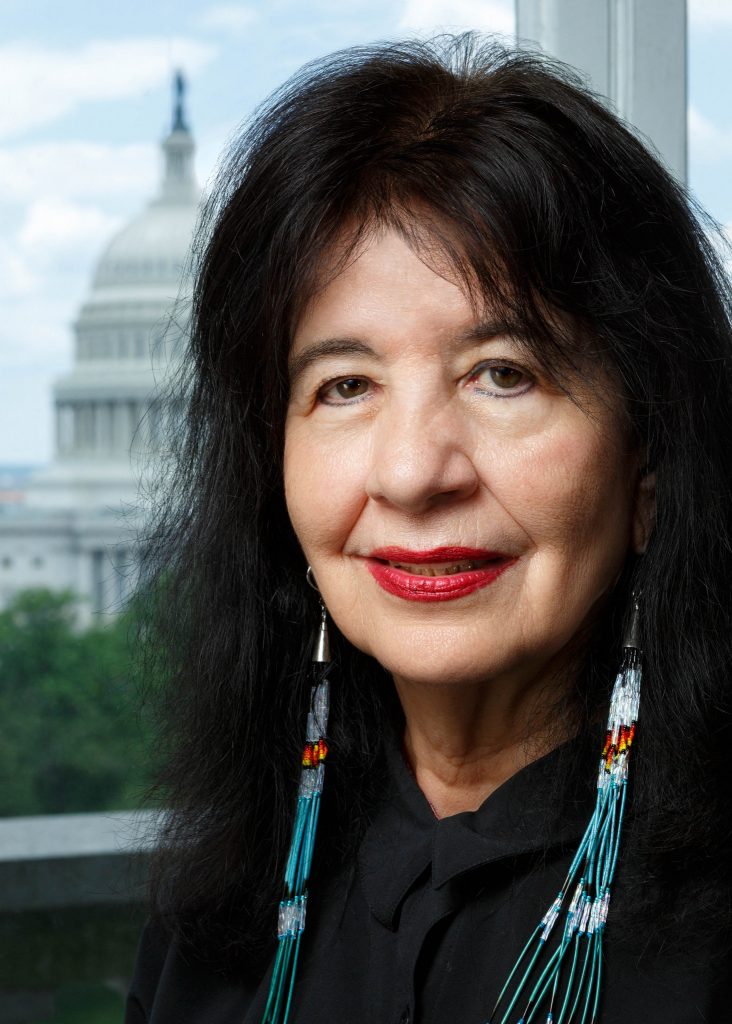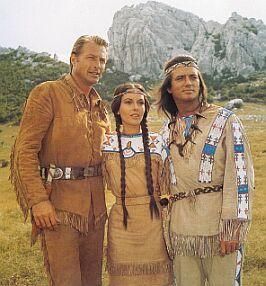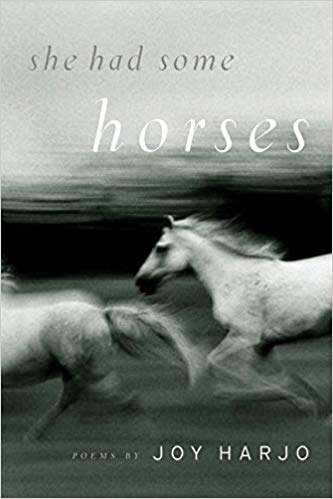
Joy Harjo is the first Native American Poet Laureate in the 83 years long history of the position. Born in Tulsa, Oklahoma on May 9, 1951, Harjo is a member of the Mvskoke/Creek Nation and belongs to Oce Vpofv. She is a poet, musician, playwright and activist.
Memories are a strange thing. The more we recall a specific memory, the less accurate it is to what actually happened. Most of the times, memories come in flashes to me and it is hard to grasp them. But there are things, which are still the same years later and they make remembering easier. Like my parents arguing over what to watch on TV. My mum always complains when my dad wants to watch yet another action film. In early 2010s it would be the iconic films starring Steven Seagal and Spaghetti Westerns with Bud Spencer and Terence Hill. Whenever they were on TV, my parents’ compromise was to watch Old Shatterhand (known as Apaches’ Last Battle in the UK) instead, or any of the other series and films with Old Shatterhand and Winnetou. I was absolutely shocked when I talked to my American friends and they never heard of these two characters my entire perception of Native Americans was built on. Later I found out that Karl May, a German novelist, completely invented these extremely popular Euro-western characters without actually being in the United States. In fact, so popular that according to Mann (1940, p. 400):

The Third Reich is Karl May’s ultimate triumph, the ghastly realization of his dreams. It is according to ethical and aesthetic standards indistinguishable from his that the Austrian house-painter, nourished in his youth by Old Shatterhand, is now attempting to rebuild the world. His murderous minions are perverted romanticists, infantile, criminal, irresponsible. They are hopelessly estranged from both reality and art, sacrificing all civilization and all common sense on the altar of a brutish “hero-ism,” but stubbornly loyal, whether consciously or not, to the foul substitute for poetry and culture represented by Karl May.

During this time I was already studying Film and American Literature at University and I knew I had to educate myself more on Native Nations. Which is when Joy Harjo and her masterful self-identification and self-exploration through Nature in She Had Some Horses (1983) come in.
We have seen a big increase in protests all across the globe in recent years. People are continuously challenging what they perceive as a failure of democratic institutions; we question the existence of equal civil, political and social rights which form the core of democratic life. Native poetry is characterised by the use of a trope that is rooted in a generally shared worldview; the colours of the earth which serve as a metaphor for the relationship between humans and nature (Jossa, 2007, p. 585). Harjo makes use of this trope in the process of identification with the earth in the poem ‘Remember’:
Remember the earth whose skin you are:
Red earth, black earth, yellow earth, white earth,
brown earth, we are the earth.
Remember the plants, trees, animal life who all have their
tribes, their families, their histories, too. Talk to them,
listen to them. They are alive poems.
Remember the wind. Remember her voice. She knows
the origin of this universe.

The poem suggests that Harjo has intimate relationship with Nature which is common across Native communities around the world. Nature often not only acts as inspiration, but also as a starting point in Harjo’s search for her individual and collective identity. Jossa (2007, p. 587) argues that this is a specific characteristic of Native literature which links to marginalisation that Native people experience, and relates to loneliness, violence, and denial of their life. The search for identity starts directly from this marginalisation and exclusion.
In Native poetry, the relationship between a person and Nature is evoked through a conversation between entities which belong to one cosmos. This profound relationship of the individual’s body, mind, and spirit is fragmented and incomplete without this conversation. Therefore, in Harjo’s poems, the purpose of Nature is more than a backdrop and an object of reflection. It becomes “a witness, and a source of consolation” which then leads to her speaking out (Jossa, 2007, p. 587).
In the poem ‘Remember’, Harjo sets up a strong bond between every entity and the natural elements which have anthropomorphic forms. For example, “wind” is referred to as she and her, instead of it. The use of language and metaphor enables a complete change of the body and the landscape. Metaphorisation and transformation of a person’s engagement makes their search for mystical connections with all the beings of the land possible. So in Harjo’s poetry, metamorphosis is the essence of identity (Jossa, 2007, p. 587).
In another poem called ‘Skeleton of Winter’, Harjo searches for a creative and regenerative interaction with the environment through imagery which saturates the space with a mystical presence:

I am memory alive
not just a name
but an intricate part
of this web of motion,
meaning: earth, sky, stars circling
my hearth
centrifugal.
This way, Harjo is reclaiming the landscape through the ancestors’ memory of the land from the time when it was inhabited by Native tribes. Moreover, recapturing these memories allows “one to recover one’s consciousness of belonging to it” (Jossa, 2007, p. 589).
However, she is still an incomplete being. In many of her poems, Harjo portrays identification as a tentative and unfulfilled longing; a fragmentation of the woman, as well as nature. For instance in the poem ‘Call It Fear’:
There is this edge where shadows
and bones of some of us walk
backwards.
Talk backwards. There is this edge
call it an ocean of fear of dark. Or
name it with other songs.
This work is constructed around the word “edge”. It carries a variety of meanings, both concrete and abstract. It refers to both the geographical and the human space. “The edge” is an ocean of fear, but also a place where bones and shadows walk. “The edge” lives inside the poet:
There is this edge within me
I saw it once . . .
It is no longer the sheer drop of the cliff. It has become
a string of shadow horses kicking
and pulling me out of my belly . . .

The “edge” shapes internal as well as external landscape and the search for memory in the landscape stops at this limit (Jossa, 2007, p. 590). Harjo is standing between comfort and pain which allows her to create “an English language based on a tribal concept of language” and as a result, Harjo is able to restore her own image, as well as to „realise her humanity “(Momaday, 1975).
Art and literature from other nations and ethnic groups are the easiest to access and “consume” if you do not belong to them. But if we try to understand what the artist is trying to say, we just may find out that we share a lot of the same values in different ways. You do not need to over-analyse, just taking a moment to stop and consider how a work of art makes you feel, what it reminds you of and makes you think of can help you understand it better. In these challenging times when it feels like the whole world is on fire, let’s find ways to connect with ourselves, the world and each other.

You can always reach out to us via telephone: 01227 922352, email: library.canterbury@canterbury.ac.uk twitter: @ccculibrary
 Library
Library Alexandra Telekova
Alexandra Telekova 1545
1545

